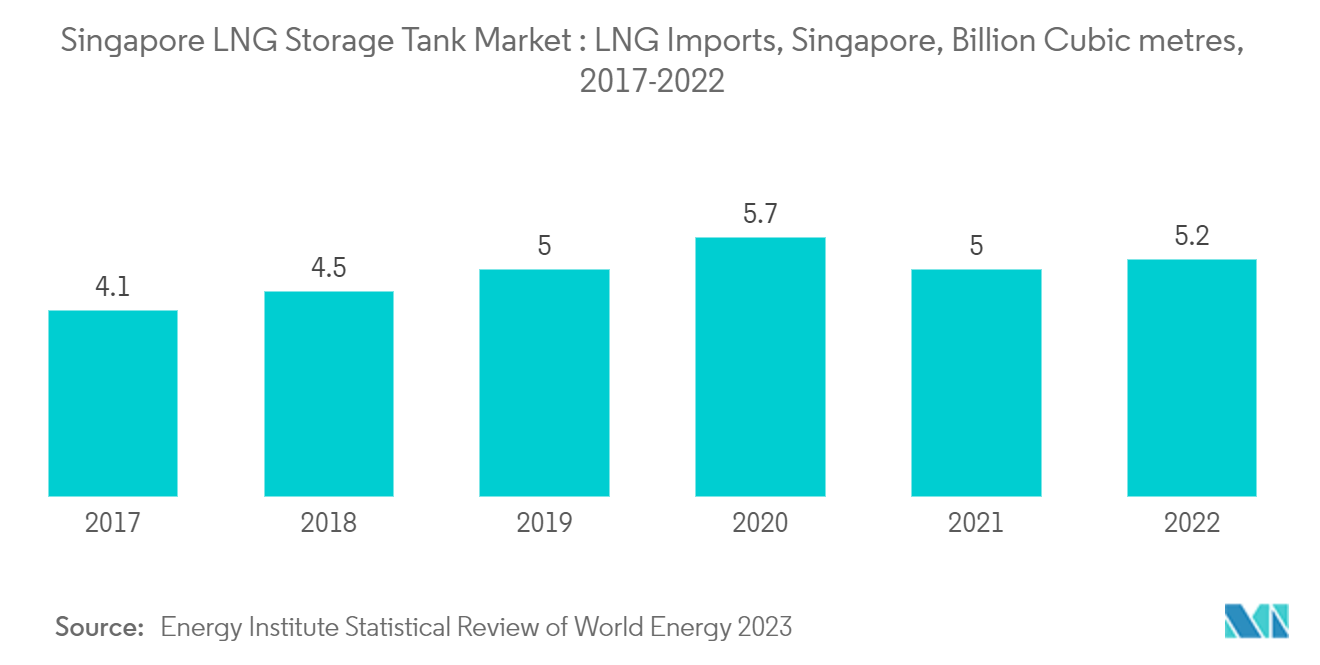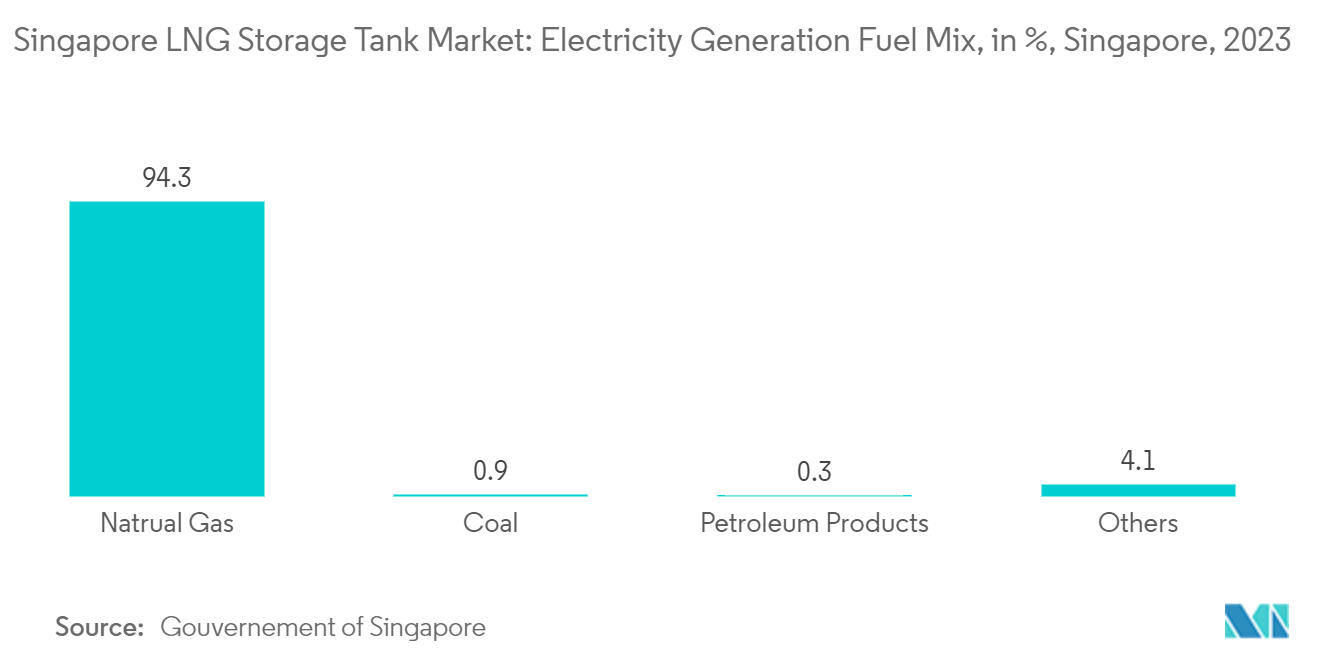Market Trends of Singapore LNG Storage Tank Industry
Self-supporting Tanks to Witness Significant Growth
- Self-supporting tanks are tanks used for the carriage of liquefied natural gas. It is strong enough by virtue of its construction to accept any loads imposed on it by the cargo. These tanks are made from aluminum alloy or 9% nickel steel with layers of insulation on the outside.
- These tanks are entirely self-supporting and do not form part of the ship’s hull structure. These tanks do not contribute to the hull strength of a ship either. The tanks are welded to cylindrical skirts or tied to supporters welded to the ship structure.
- The self-supporting tank type is strong and reliable and has been used by almost all large LPG carriers but has not been developed for LNG for various nontechnical reasons. These tanks are designed to support their weight without any external support.
- They are typically large, cylindrical tanks that are constructed with materials and designs that can withstand the extremely low temperatures and high pressures associated with LNG storage. Self-supporting tanks are often used for large-scale LNG storage applications, such as LNG terminals, LNG vessels, and LNG fueling stations.
- The self-supporting tanks are divided into A, B, and C types. The A-type tanks are designed using the classical ship-structural analysis procedure. Due to the possibility of gas leakage in the case of a break in the tank structure, A-type tanks are required to have a complete secondary barrier that can collect the leaking gas and transfer the gas vapor to a controlled area.
- According to the Energy Institute Statistical Review of World Energy 2023 data, the LNG imports rose by 4.6% when compared to 2021, reaching 5.2 Billion cubic meters. The past five-year trend, from 2017 to 2022, shows an exponential increase in the import of LNG in Singapore. Hence, for such an exponential increase in consumption of LNG, the Self-Supporting Tanks play a major role.
- Thus, with the above-mentioned points, due to the rising consumption of LNG in Singapore, the Self-Supporting Tanks is expected to witness significant growth in the Singapore LNG Storage Tank market during the forecast period.

Rising Demand for LNG to Drive the Market
- Singapore's heavy reliance on natural gas to generate electricity, the current SLNG terminal plays a key role in enabling undisrupted natural gas supply, SLNG noted. It has two jetties and four LNG storage tanks, with a total capacity of 800,000 cubic meters.
- Natural gas currently represents around a quarter of the country’s overall energy consumption. About 94.3% of that gas is used in the power generation sector (including in combined heat and power plants), around 0.9% of power is generated from petroleum products, and 4.1% is generated from other energy sources.
- Further, Singapore has actively sought to diversify its energy sources and reduce reliance on traditional fossil fuels like coal and oil. LNG offers a cleaner alternative, with lower emissions compared to these fuels. Using LNG helps European countries meet their climate goals and reduce air pollution.
- Natural gas is one of the options for the energy transition in Singapore. Singapore does not produce LNG on its own. However, the government aims to become the global hub for LNG trade. Singapore is already a global hub for petroleum products in Asia. LNG is critical to the Singapore government's future economic development and energy security plans.
- Singapore has one of the leading trade ports and is one of the global leaders in international marine shipping. In addition, the Straits of Malacca and the Singapore Strait, adjacent to Singapore, have become integral passages for maritime transport, with many tankers, containers, cargo, and passenger ships halting at Singapore and relying on the ports for resupplies of water, food, crew changes, and fuel refilling, because of its strategic location, LNG as a bunkering fuel is expected to support the growth of LNG businesses in Singapore during the study period.
- Thus, on the basis of the above points, the rising demand for LNG is expected to drive the Singapore LNG storage tank market.

